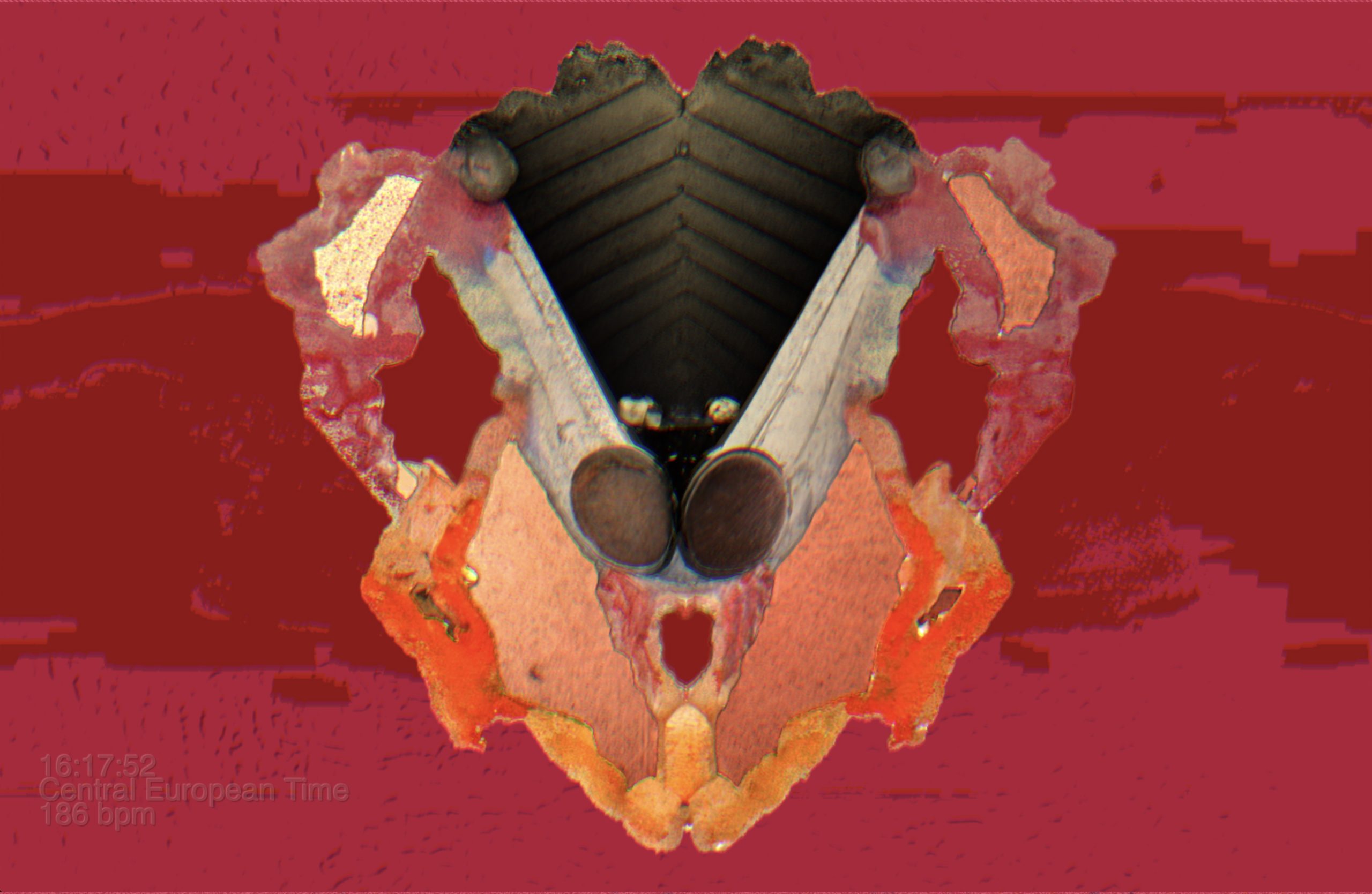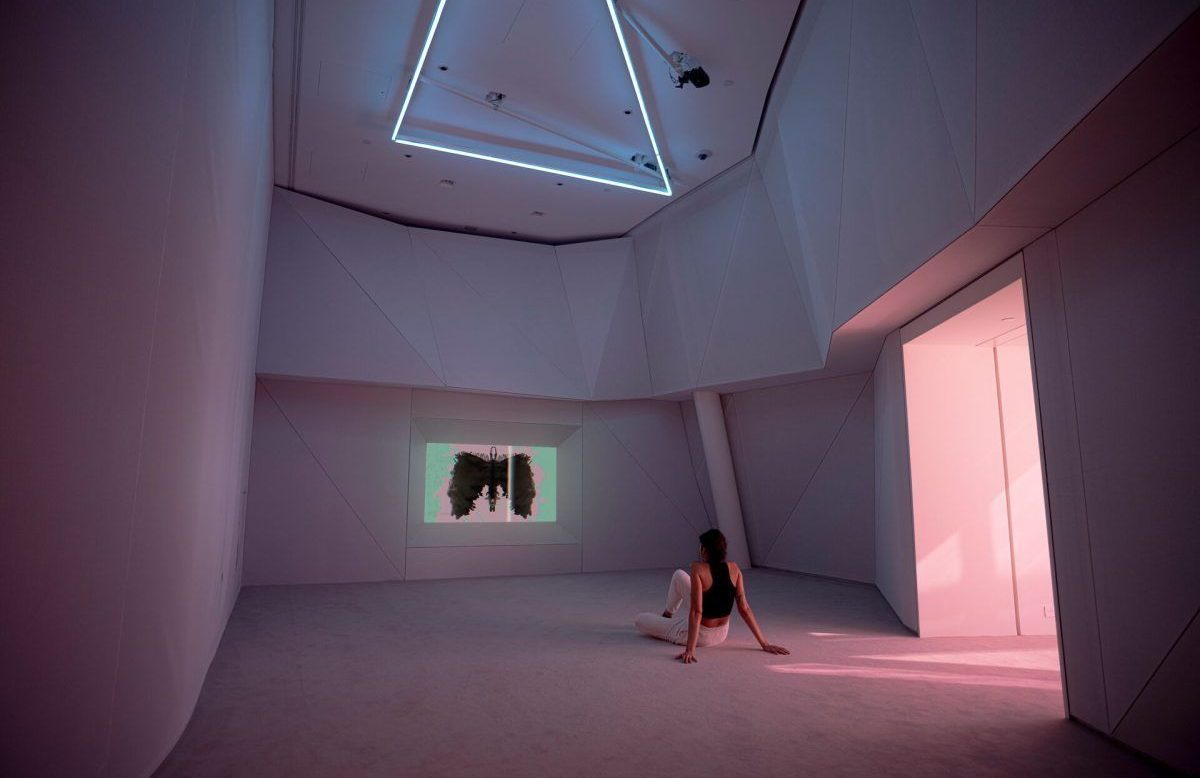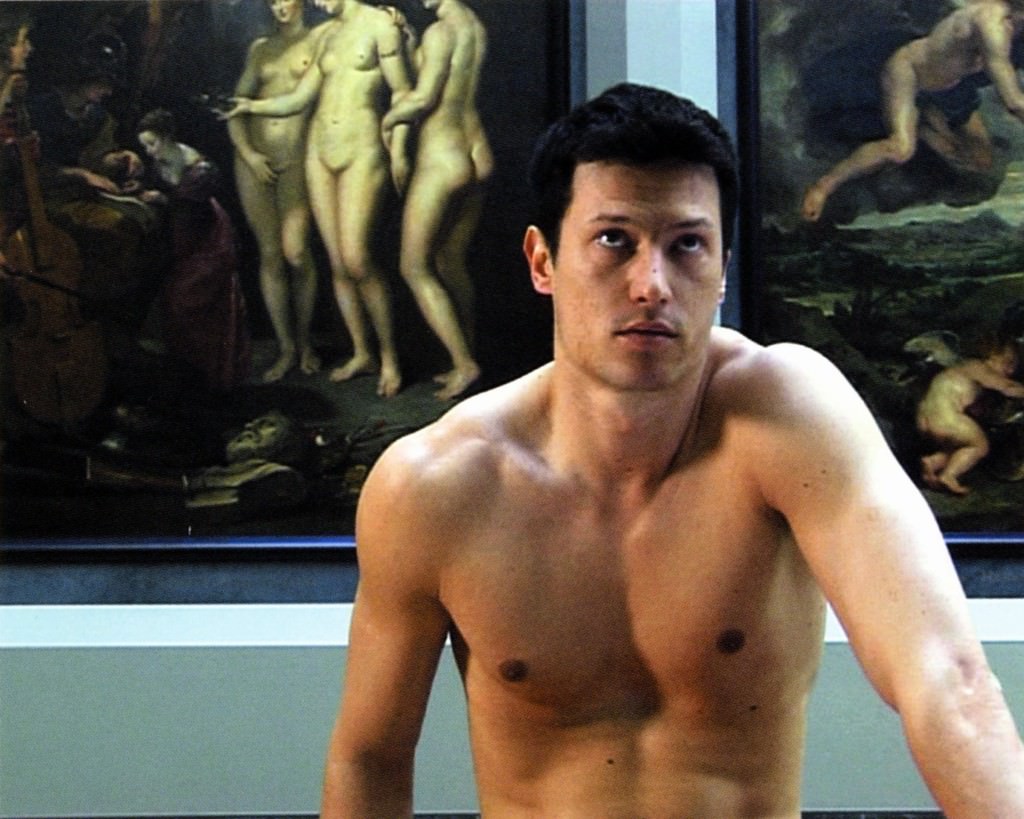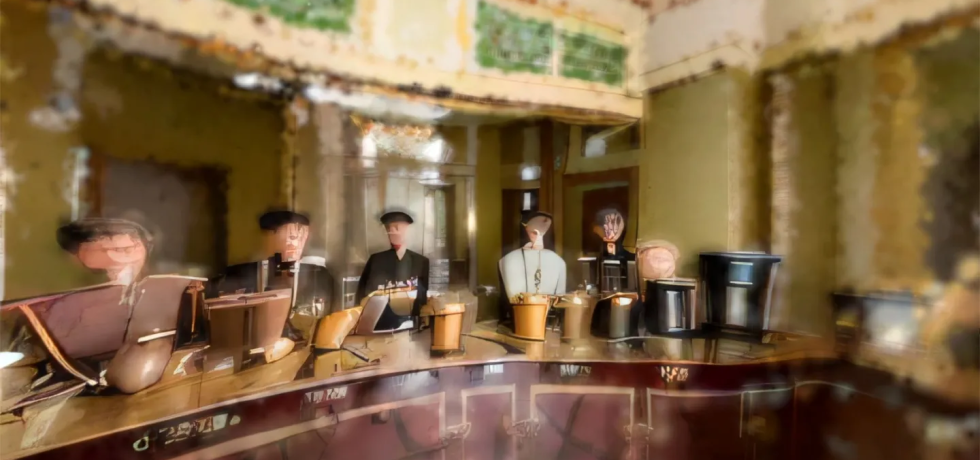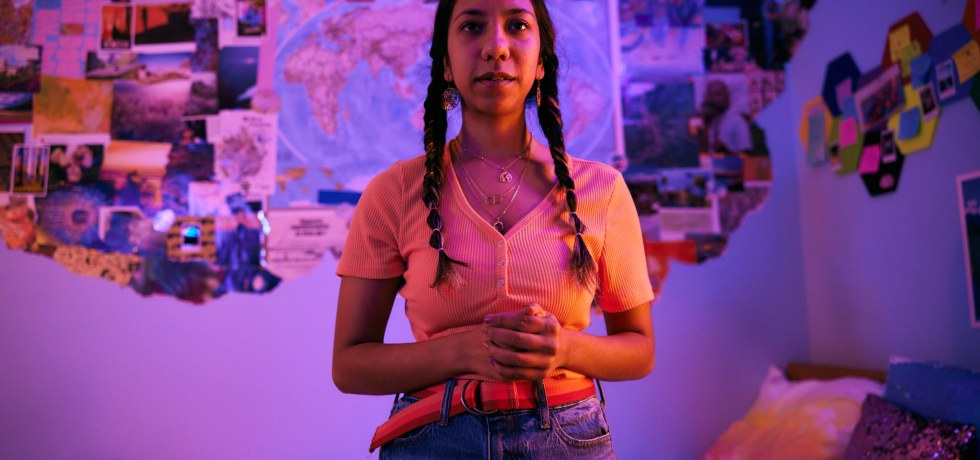Reverse Rorschach
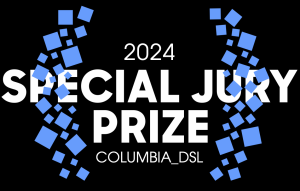
“This work is like a real-time self-portrait that is constantly changing over the next six months.”
—Shahryar Nashat
Rorschach testing was developed in 1921 by the Swiss psychiatrist Hermann Rorschach to diagnose patients according to their interpretation of a series of abstract inkblot drawings. Reverse Rorschach, Shahryar Nashat’s installation at LUMA Arles in the south of France, reverses the situation, using machine-learning algorithms to translate readings of the artist’s physical and mental state into Rorschach-like visuals. Nashat wore a monitoring device continuously throughout the six-month presentation, his vital signs translated into images and sounds by Imagen, Google’s text-to-image generator. By using his psycho-physiological data as a compositional tool, he relinquished the work of accessing his inner state—an effort traditionally associated with the artistic process—and let the AI impart it directly to the viewer. Synced with the artist each minute of each day for six months from July 2023 to January 2024, Reverse Rorschach revealed further depths in the relationship between body and machine while creating an ever-evolving self-portrait.
THE LUMA ARLES & GOOGLE RESEARCH INITIATIVE
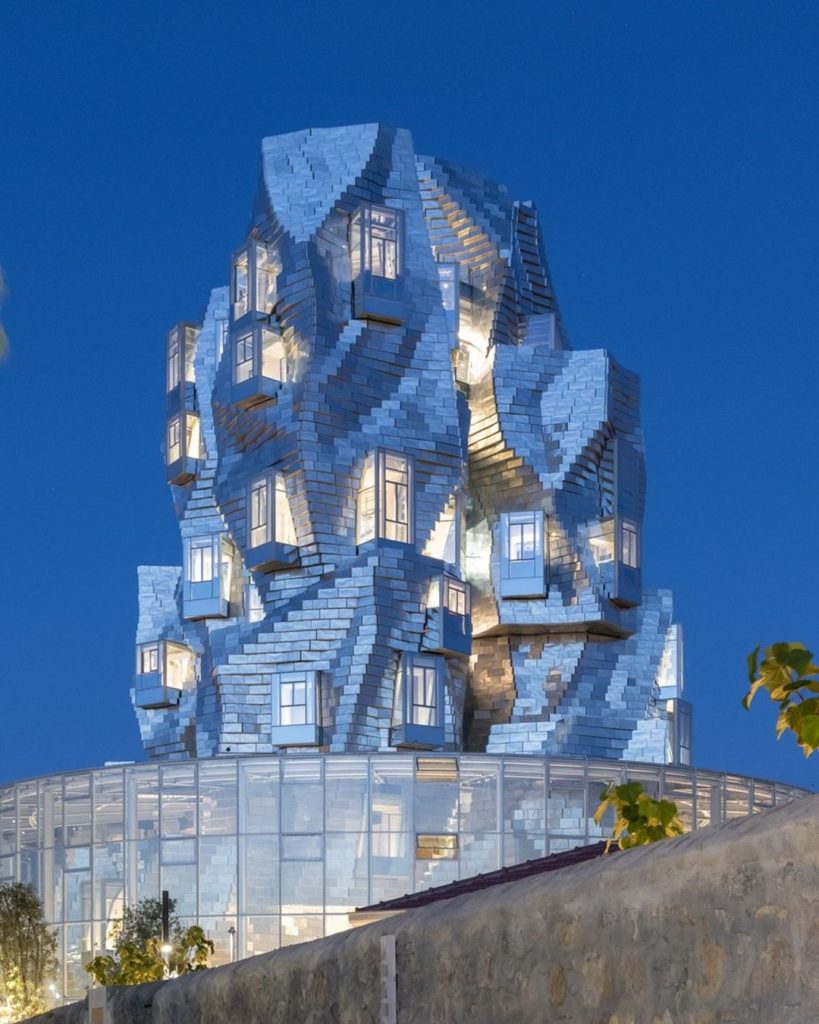 LUMA Arles is an enormous art and culture complex in a former rail yard in the Provençal city of Arles. It’s a project of the LUMA Foundation, founded in 2004 “to support the activities of independent artists and pioneers” by Maja Hoffmann, an heir to her family’s pharmaceutical fortune. (Her great-grandfather started Hoffmann-La Roche, one of the world’s largest pharmaceutical companies.) Chairwoman of the Swiss Institute in New York, a board member of the New Museum and former board member of the Tate Modern in London and the Palais de Tokyo in Paris, Hoffman has spent decades working behind the scenes in the art world. She has spent more than $100 million on LUMA Arles, transforming its old workshops and warehouses into white-walled art spaces and engaging Frank Gehry to build the 184-foot tower shown here as its centerpiece.
LUMA Arles is an enormous art and culture complex in a former rail yard in the Provençal city of Arles. It’s a project of the LUMA Foundation, founded in 2004 “to support the activities of independent artists and pioneers” by Maja Hoffmann, an heir to her family’s pharmaceutical fortune. (Her great-grandfather started Hoffmann-La Roche, one of the world’s largest pharmaceutical companies.) Chairwoman of the Swiss Institute in New York, a board member of the New Museum and former board member of the Tate Modern in London and the Palais de Tokyo in Paris, Hoffman has spent decades working behind the scenes in the art world. She has spent more than $100 million on LUMA Arles, transforming its old workshops and warehouses into white-walled art spaces and engaging Frank Gehry to build the 184-foot tower shown here as its centerpiece.
In furtherance of the foundation’s long-term focus on the creative potential of innovation, LUMA Arles presented commissions in 2023 by Shahryar Nashat, Rachel Rose, and Sara Sadik. Produced over the course of a year as part of a research initiative with Google to leverage next-generation technology in service of artists’ visions, the three projects embedded a number of advanced techniques in artificial intelligence, colorimetry, biometrics, and human-machine interaction. The intent was to harness innovation not as an end in itself but as a way of furthering artistic expression.
Born in Geneva in 1975, Shahryar Nashat makes art in which the human body and its attributes — desire, fragility, resilience, mortality — play a central role. He had initially planned to become a pianist, but his career took a different direction when he joined Silvie Defraoui’s Mixed Media workshop while studying at the École supérieure d’art visuel in Geneva during the late 1990s. From 2001 to 2002 he took up an artist residency at the Rijksakademie van beeldende kunsten in Amsterdam, and in 2002 he presented his first solo exhibition at the Centre pour l’image contemporaine in Geneva. In 2005, when he represented Switzerland at the 51st Venice Biennale, the recognition he received enabled him to develop individual and collective projects in a number of prominent art spaces.
Nashat lived in Berlin from 2007 to 2014 and had exhibitions at the Lehmbruck Museum in Duisburg (2007), at the Attitudes contemporary art space in Geneva (2008), and, on being awarded the Prix Lafayette, at the Palais de Tokyo in Paris (2014). Since 2011 he has regularly collaborated with his partner, the choreographer and performer Adam Linder, creating the lighting and set design for Linder’s ballets. The two moved to Los Angeles in 2014 and participated in Made in L.A. 2016: A, The, Though, Only, an edition of the Hammer Museum’s biennial, which showcases the work of artists based in the city. The subject of exhibitions at Kunsthalle Basel in 2017, the Statens Museum for Kunst in Copenhagen in 2019, the Museum of Modern Art in 2020, and the Art Institute of Chicago in 2023, he has lived in Paris since 2023. His work is in the collections of the Art Institute of Chicago, the Walker Art Center in Minneapolis, the Musée national d’art moderne at the Centre Pompidou in Paris, the Hamburger Bahnhof – Museum für Gegenwart in Berlin, the Fonds d’art contemporain de la Ville de Genève, Kunsthaus Zürich, and the Galleria Civica d’Arte Moderna e Contemporanea di Torino. He shows at David Kordansky and at Gladstone, among other galleries.
IN THE MEDIA
“In this piece, Nashat reimagines the classic psychological assessment involving a subject’s interpretation of inkblot images, and flips the premise: can the artist’s internal state be externalized in real time with generative AI? . . . The output is beautiful, creepy, overwhelming, calming, and generally just enthralling — like the range of feelings one might experience on any given day. Watching the images morph in and out of abstraction, I felt like I was part of a new type of creative dialogue between the AI model, Nashat’s body, and as the viewer, my own subconscious thoughts. I wondered, as I observed the generated abstractions, is Nashat aware that we’re watching these images generated by his movements right now, and is that affecting the output? How much of what I’m seeing is my own attempt to read meaning into abstract images? Would a different model, trained or prompted differently, have the same outputs for Nashat’s emotions? Should I keep these interpretations to myself, because maybe they say more intimate things about me than the piece?”—People + AI Research
